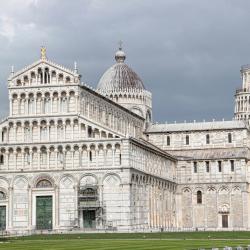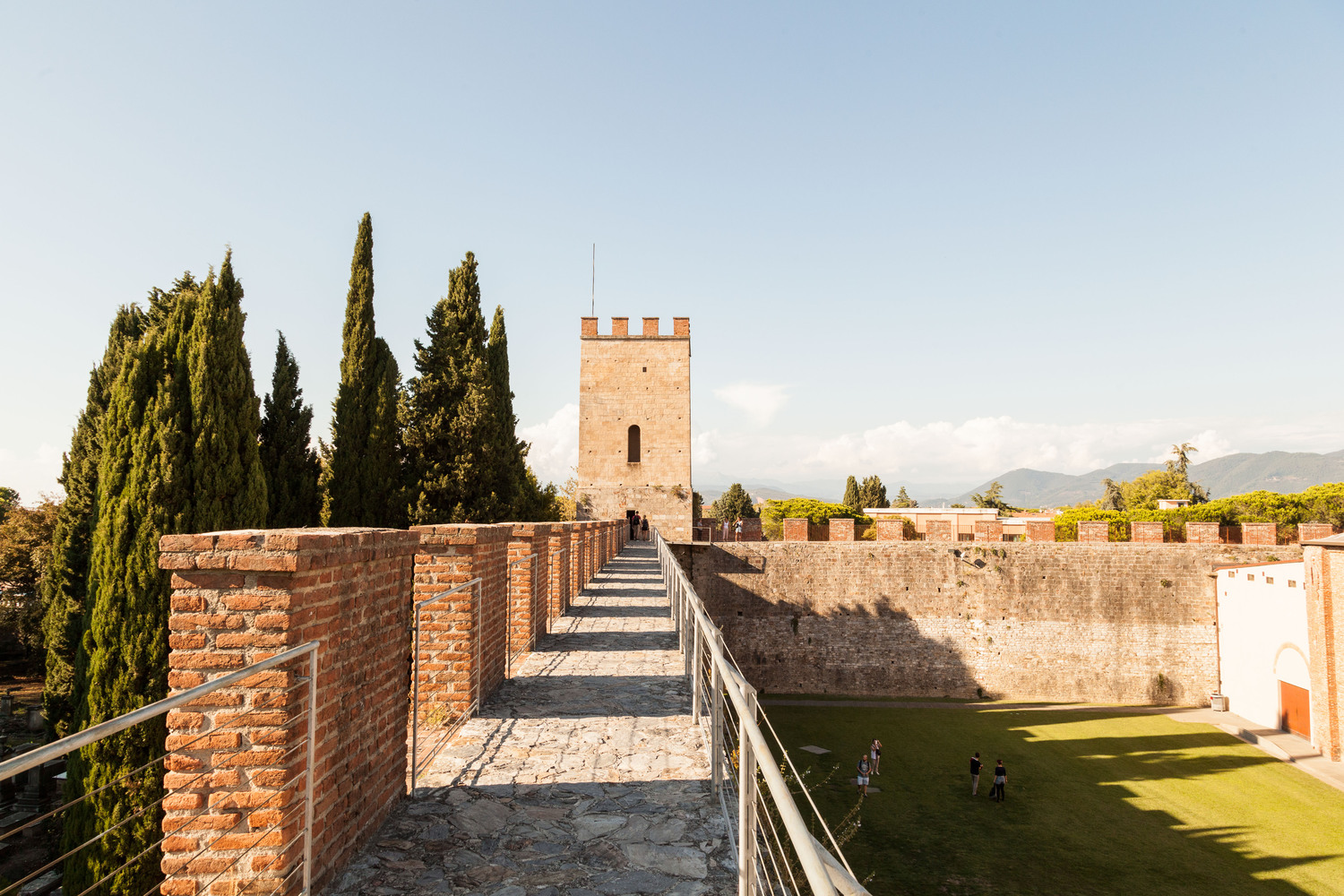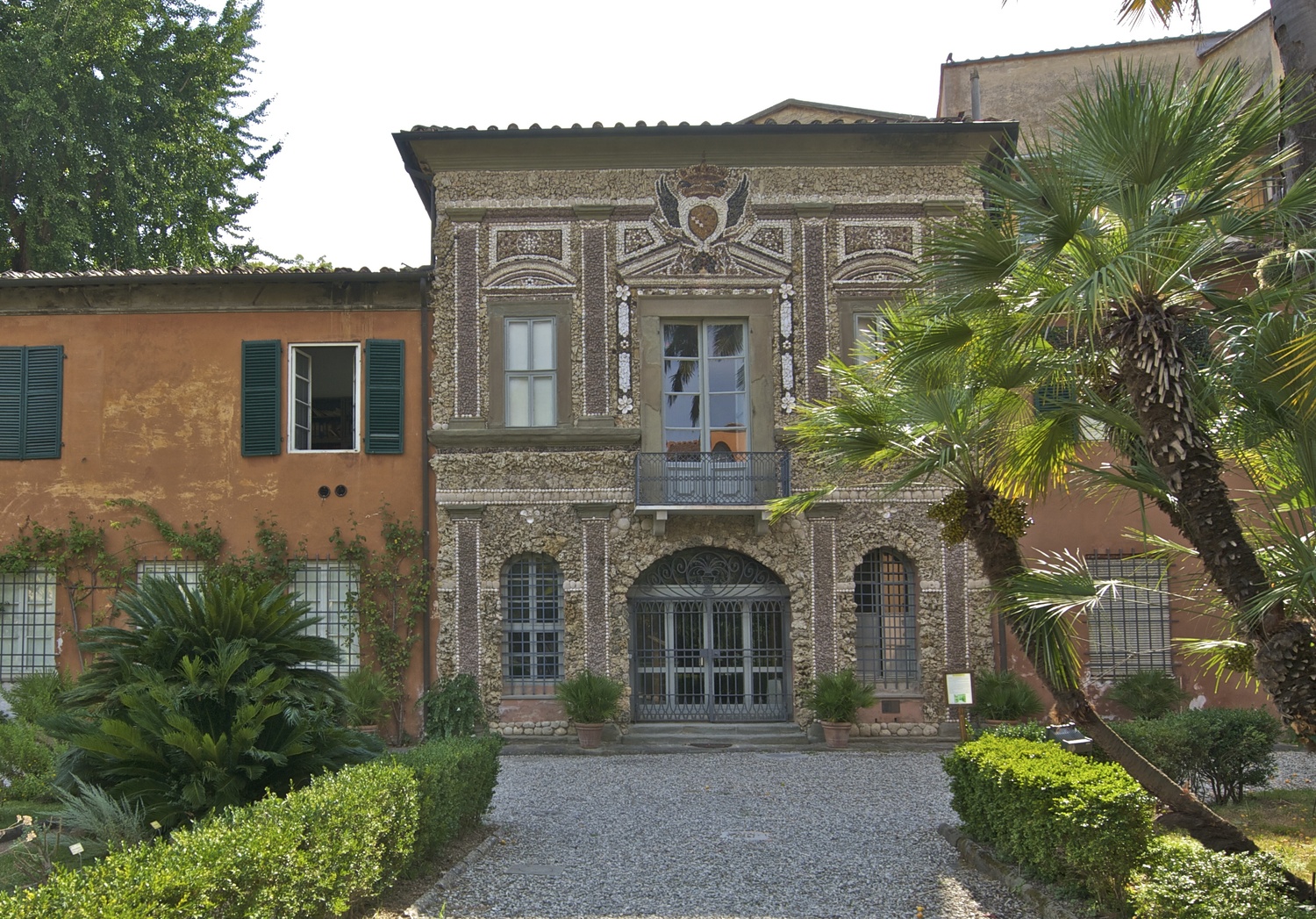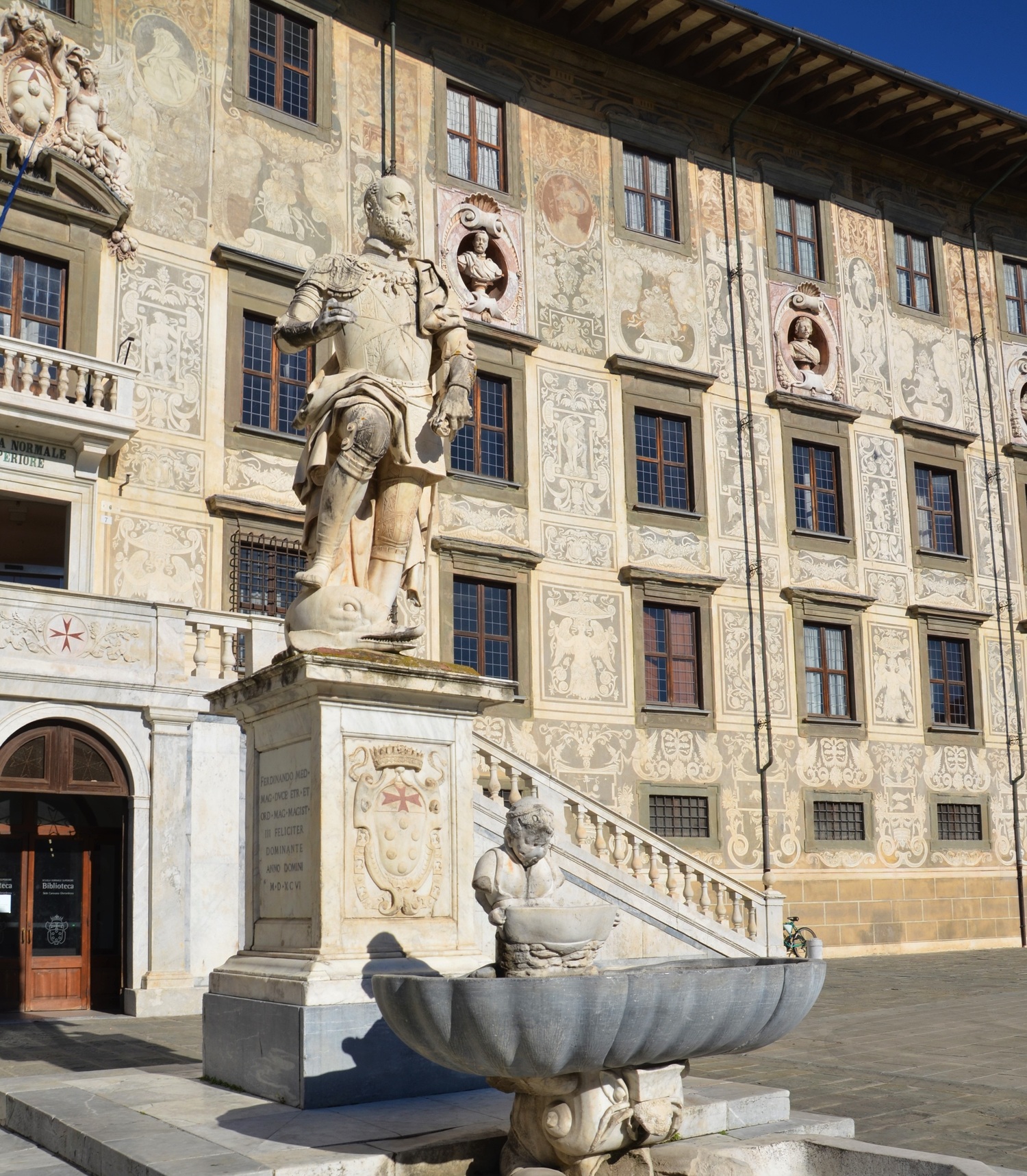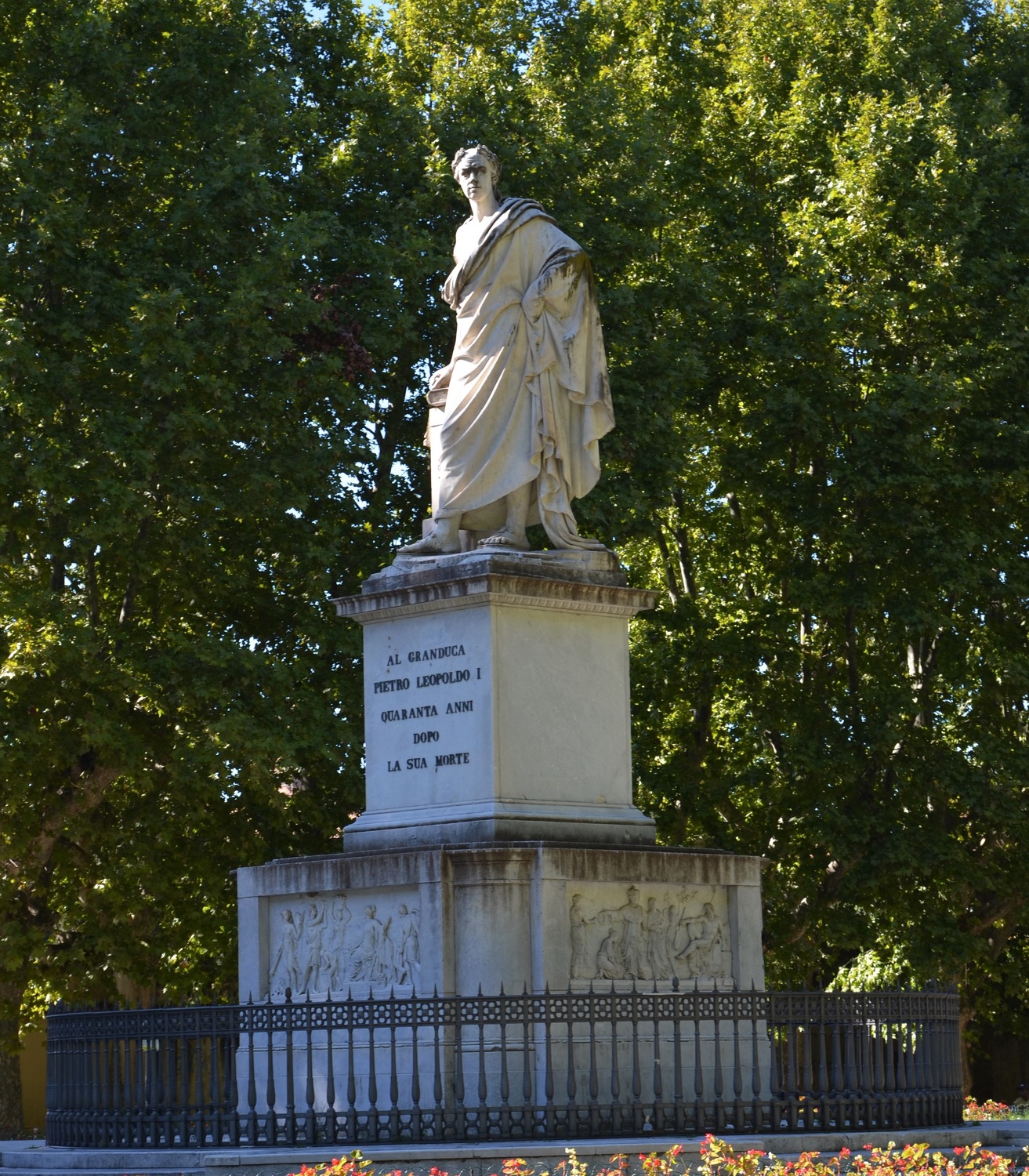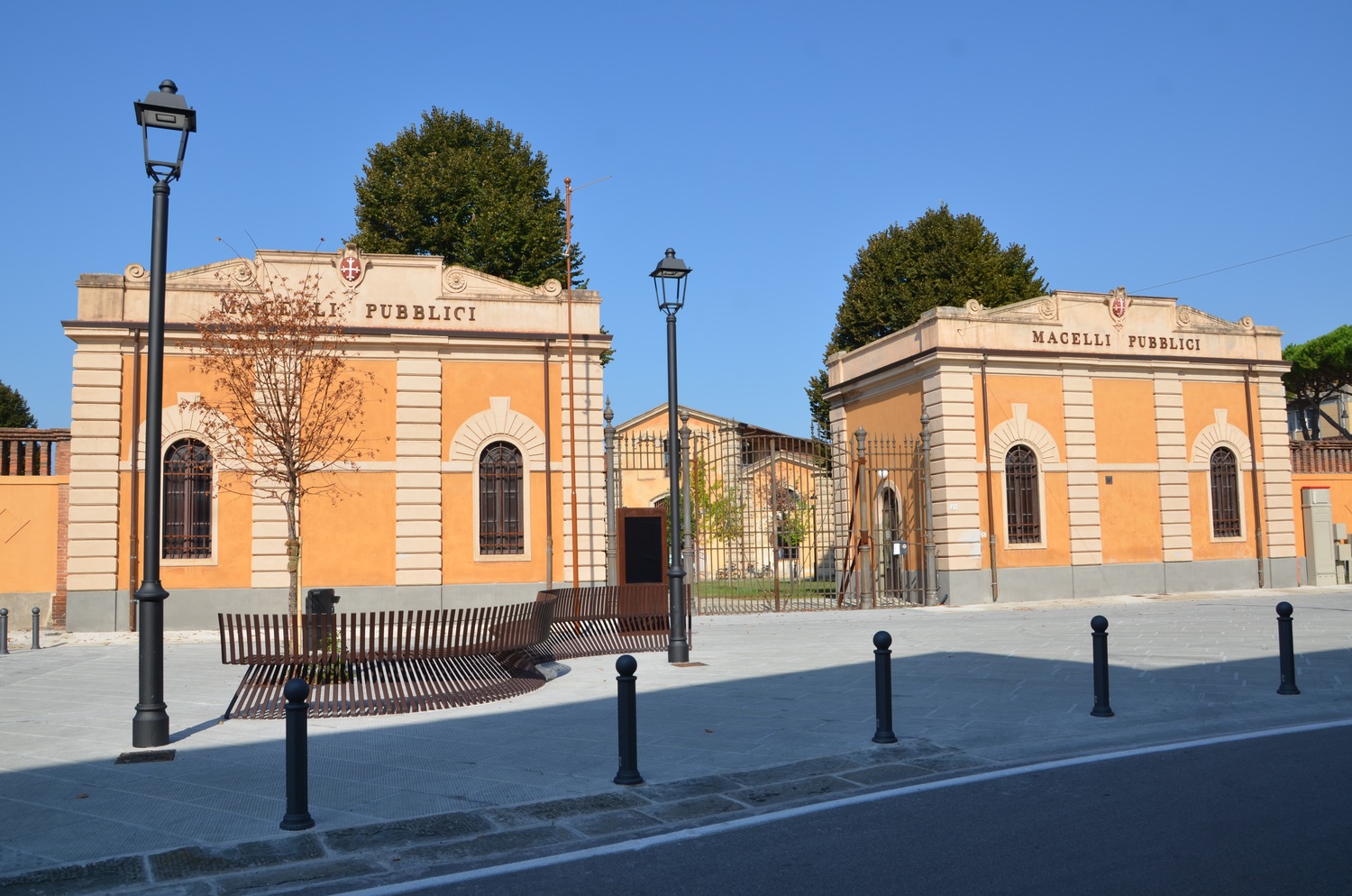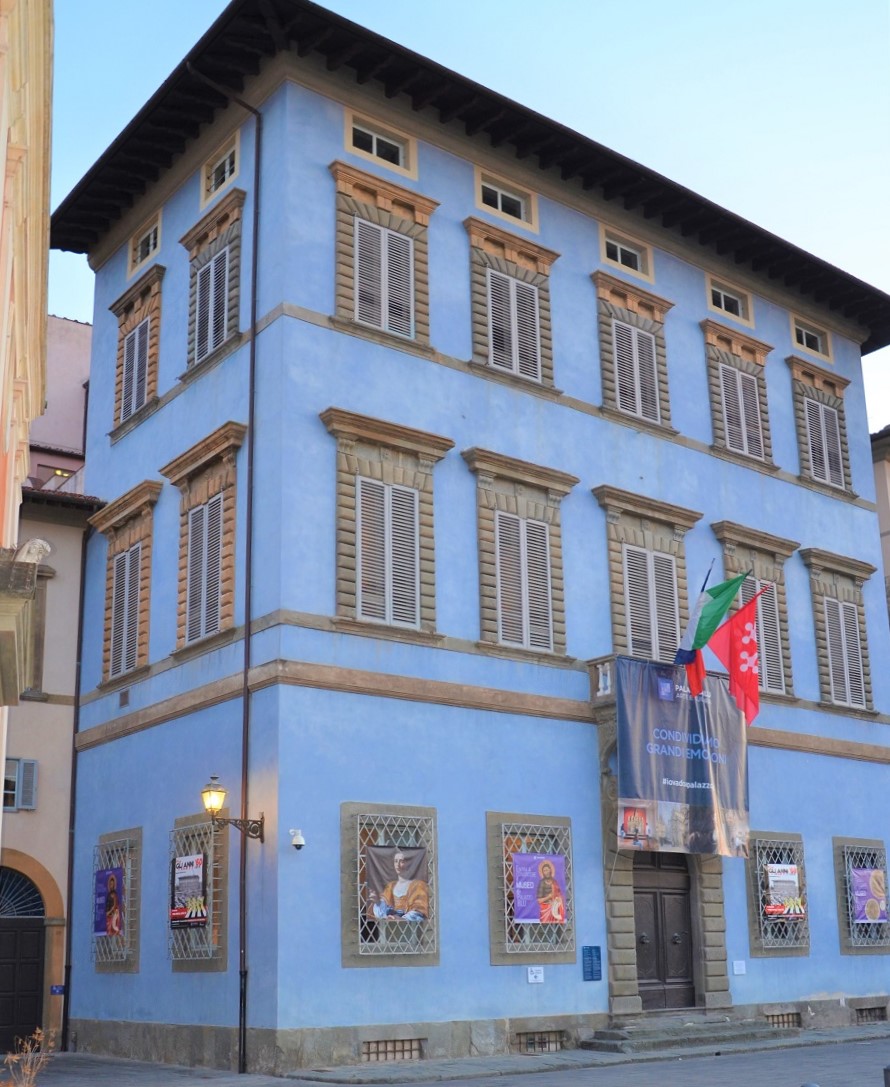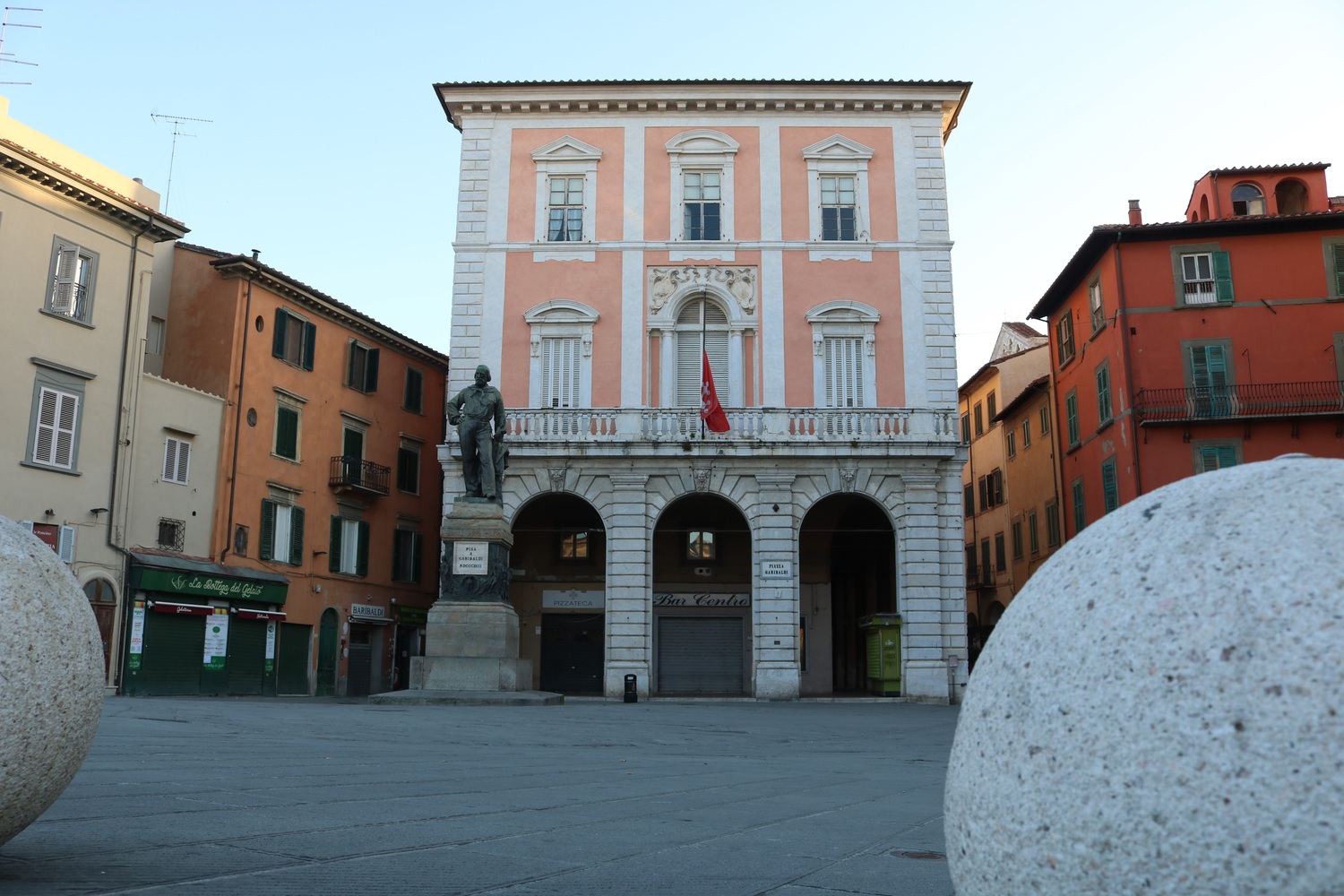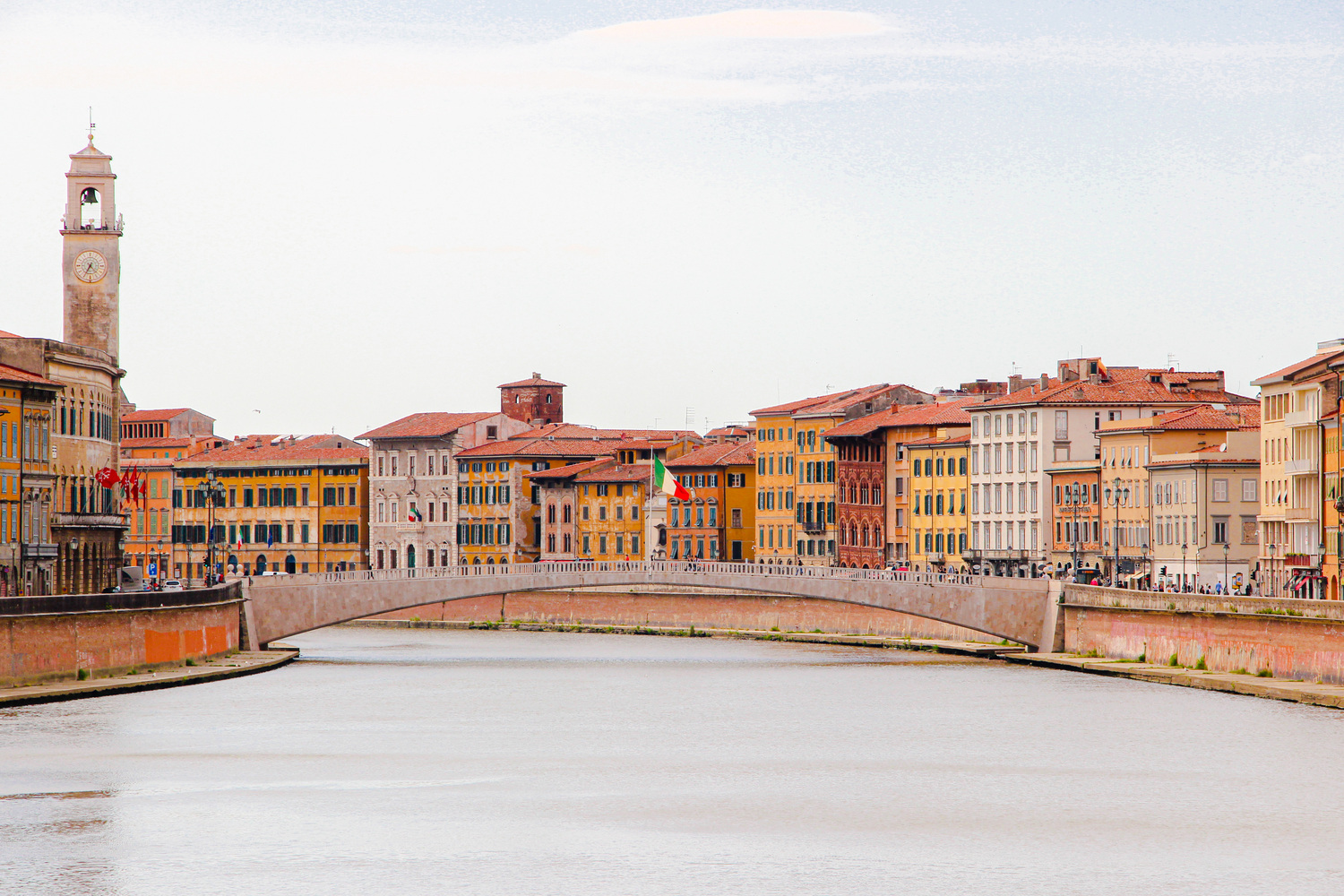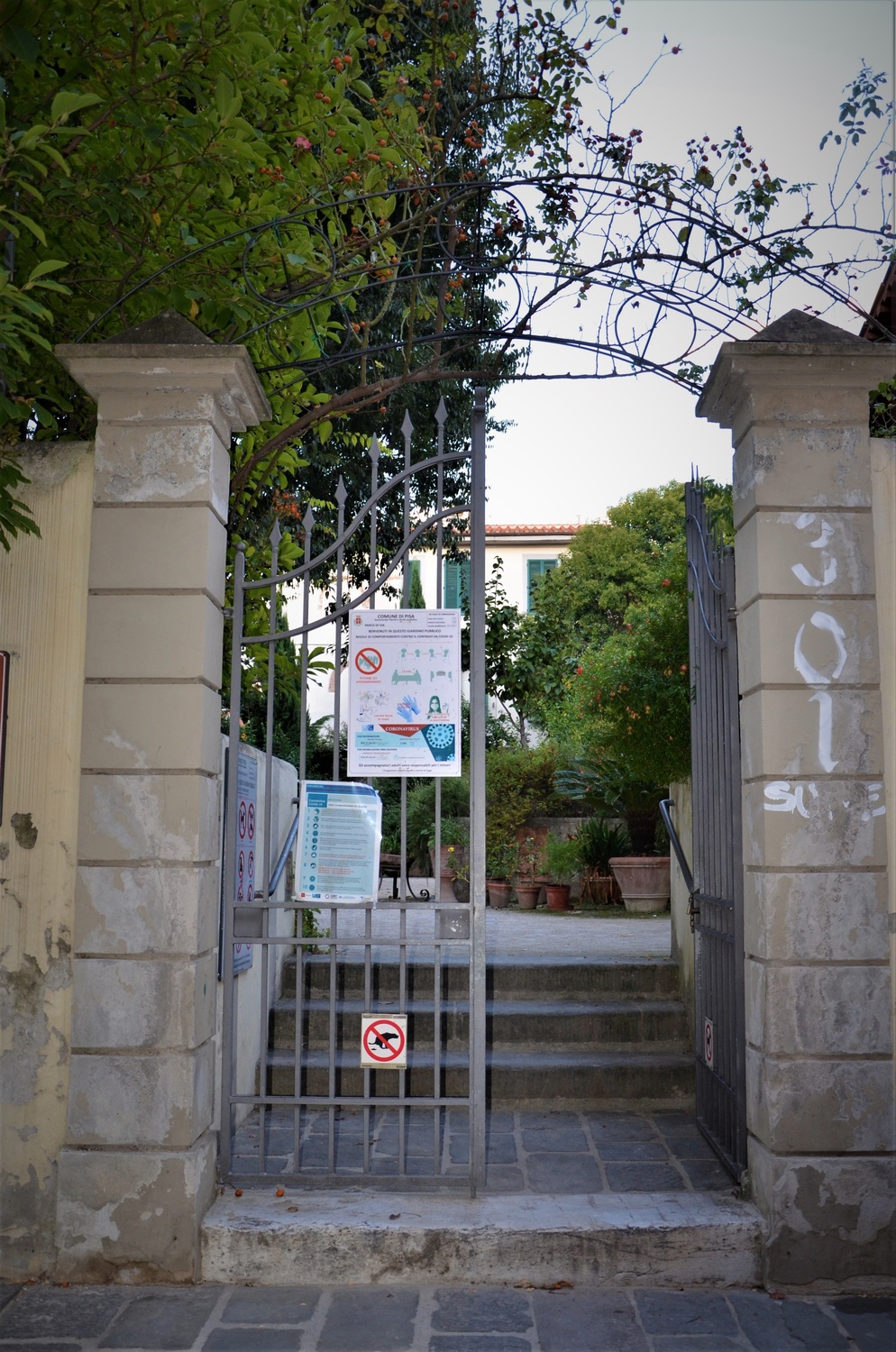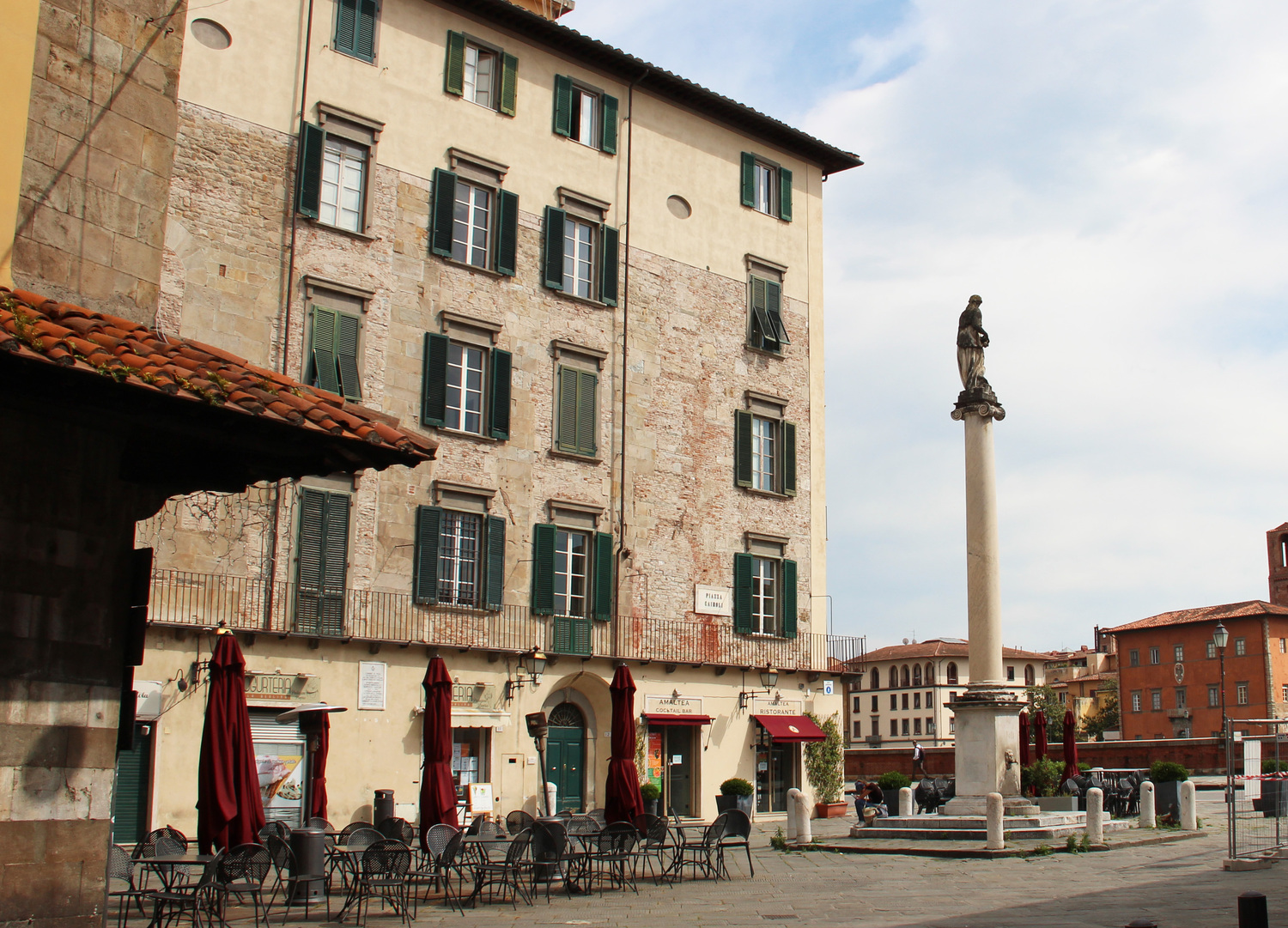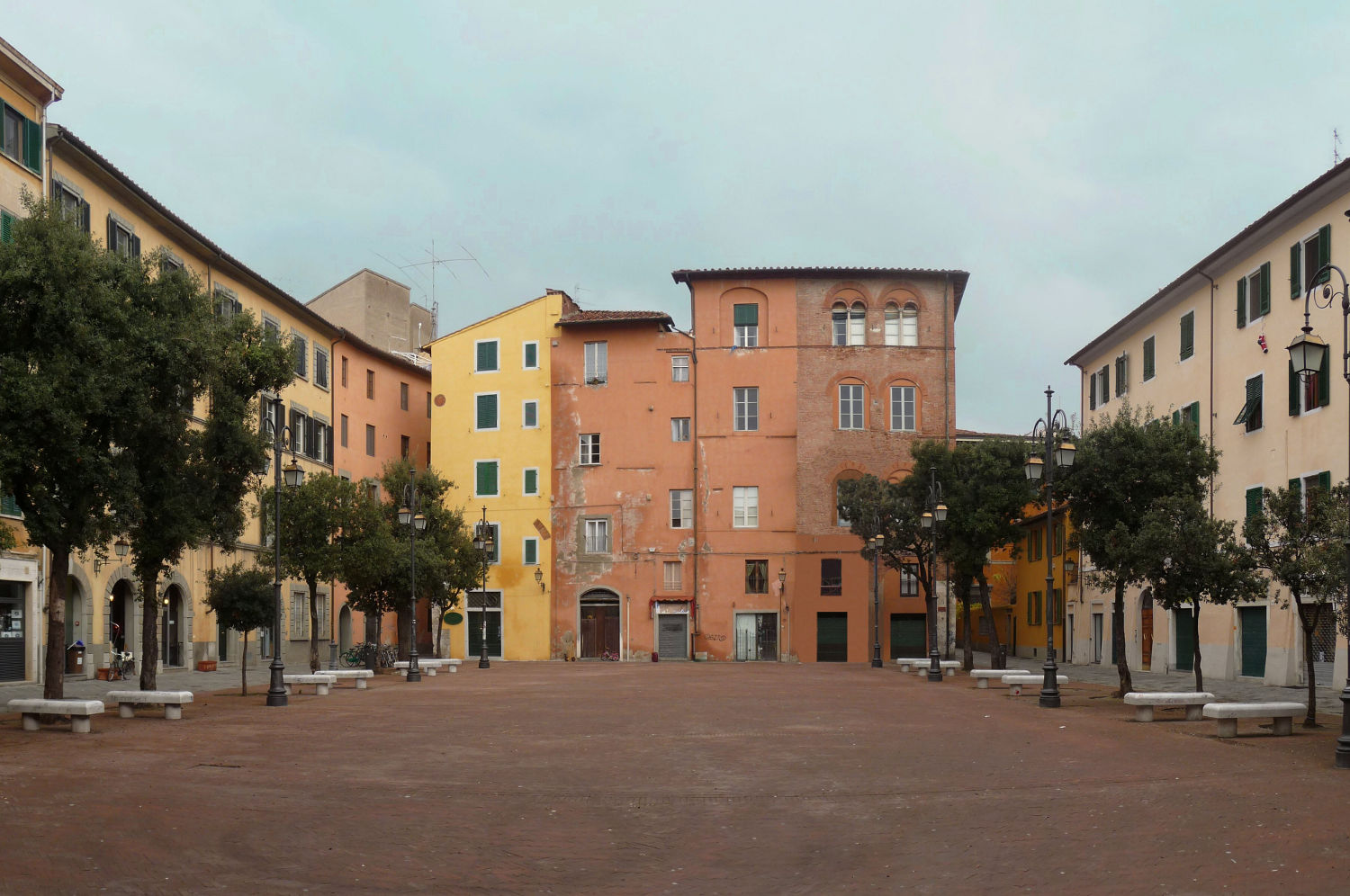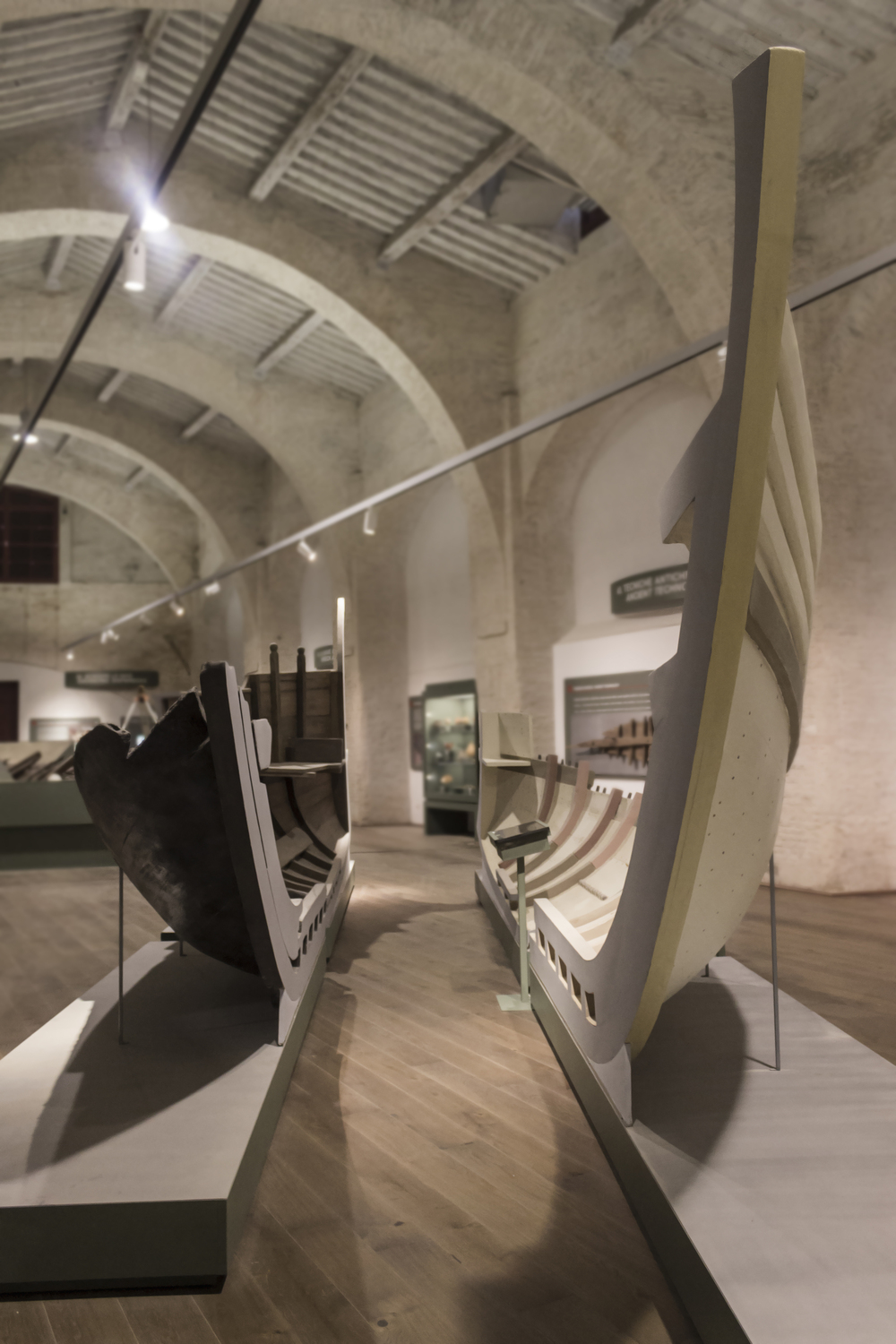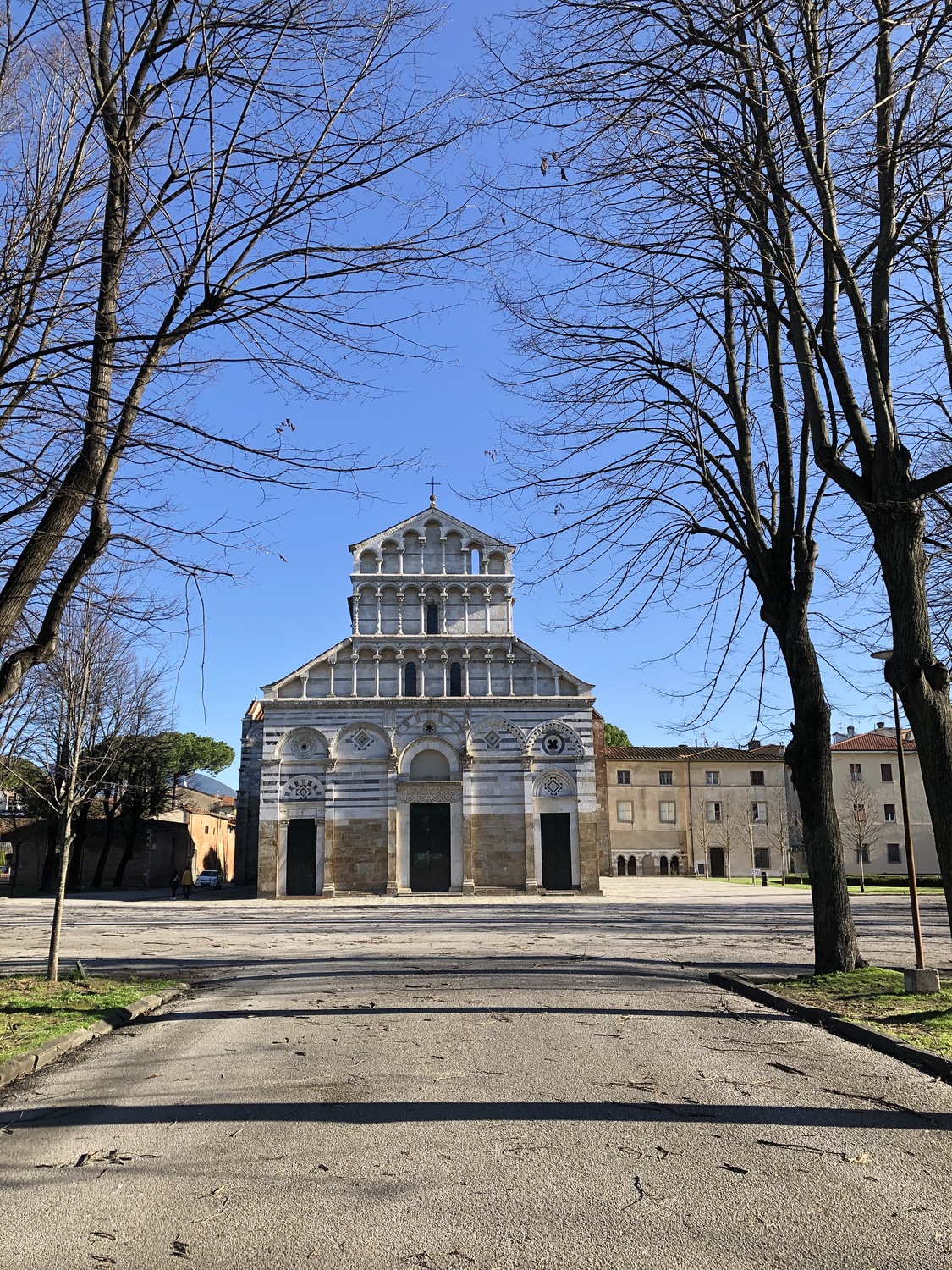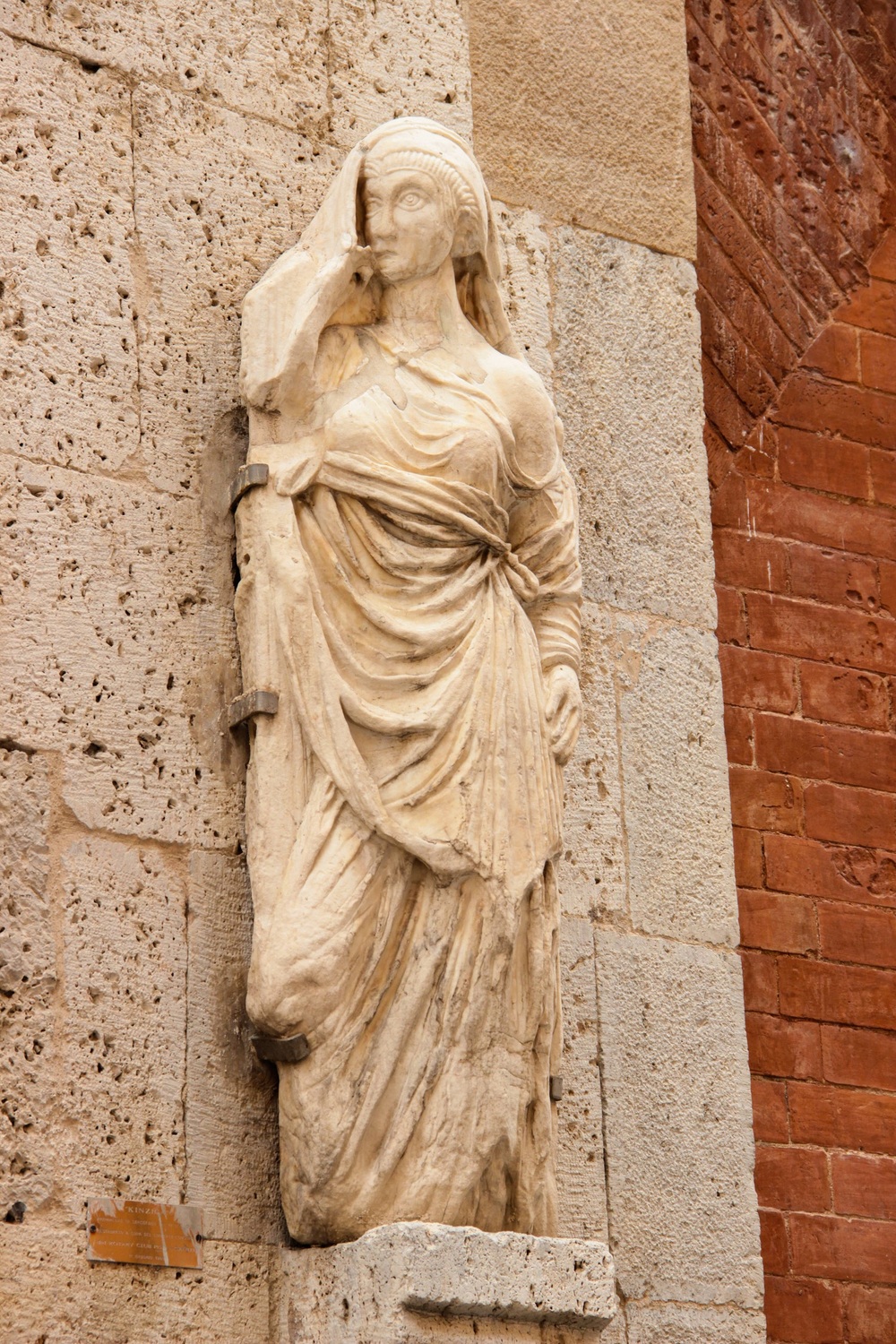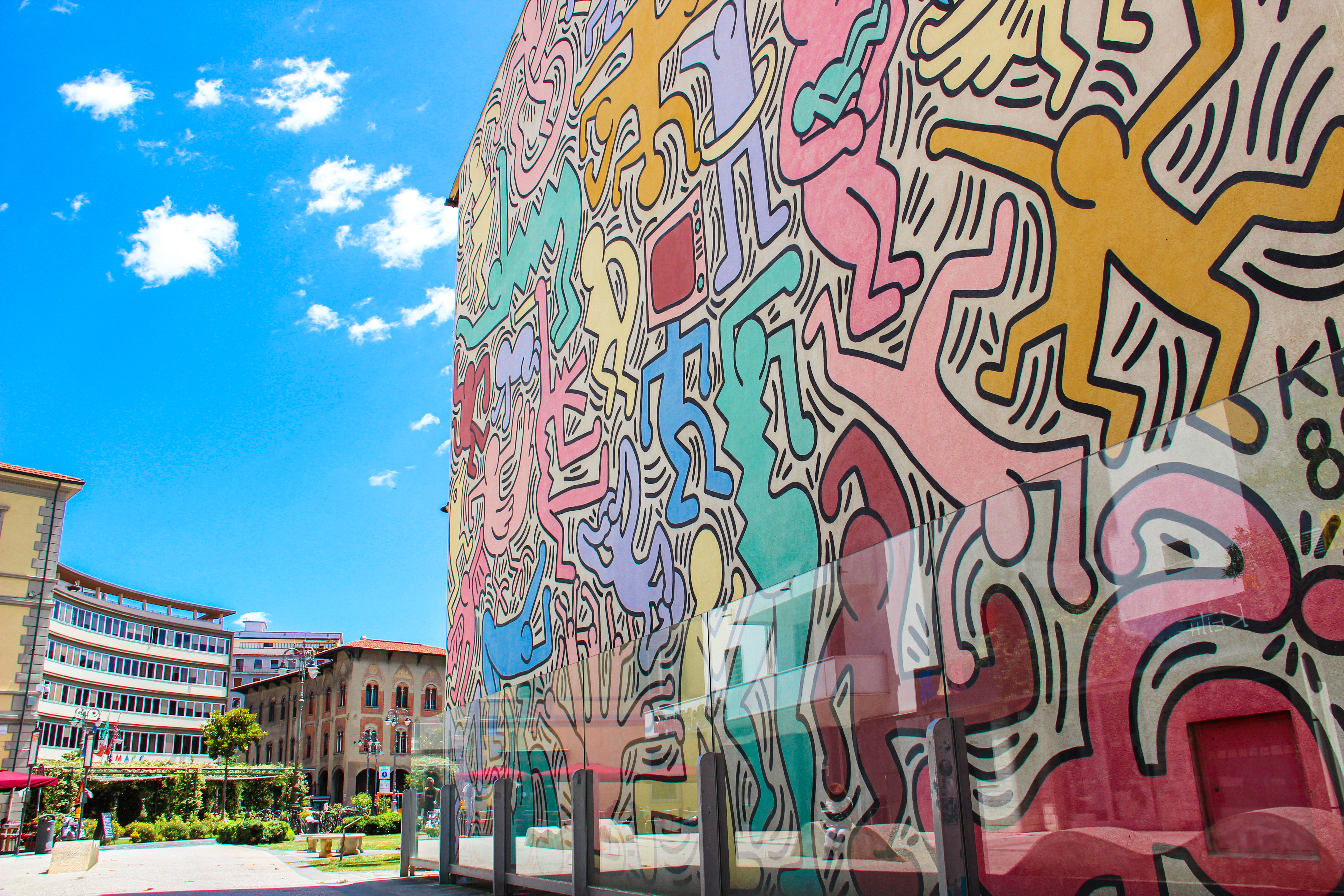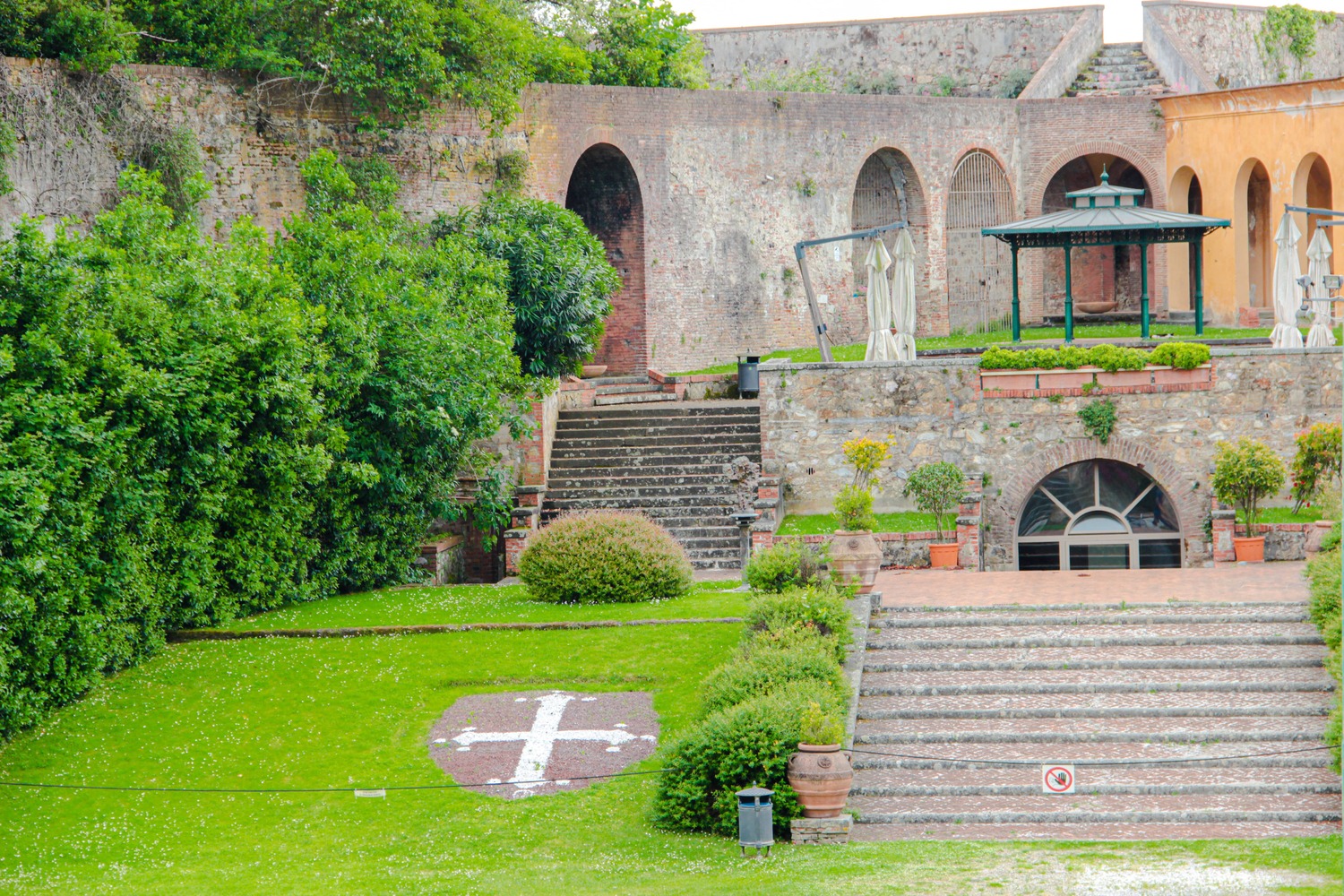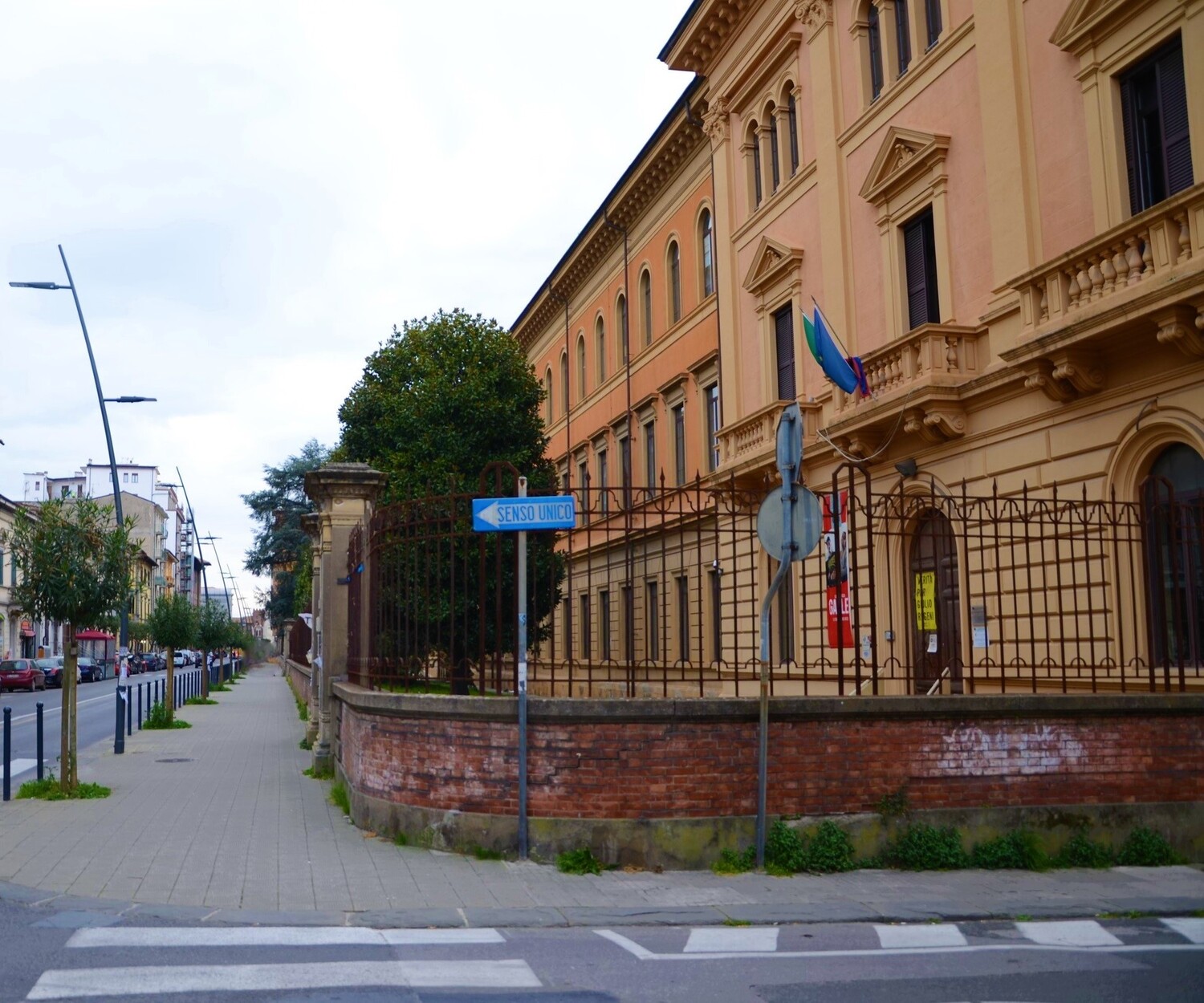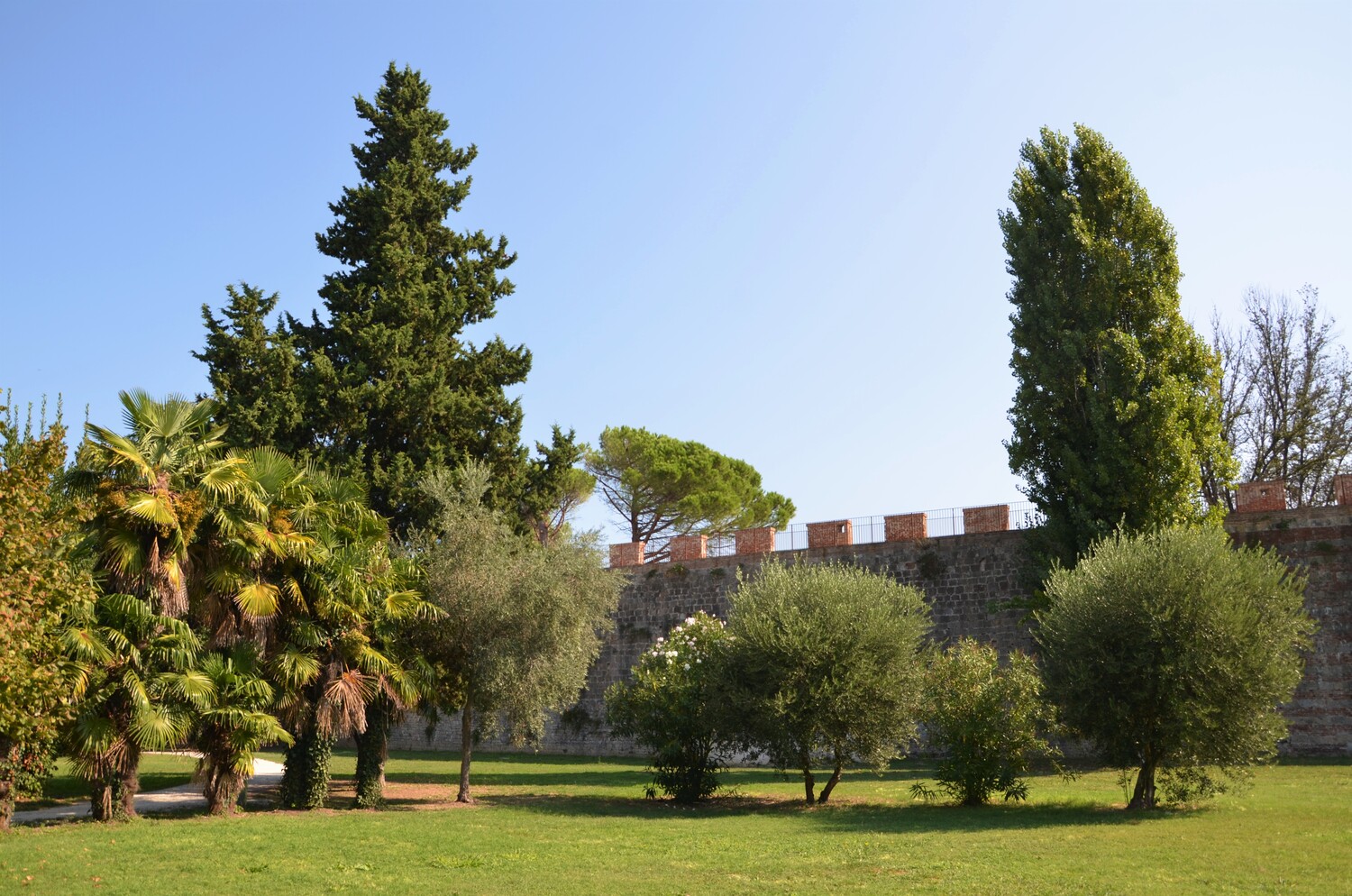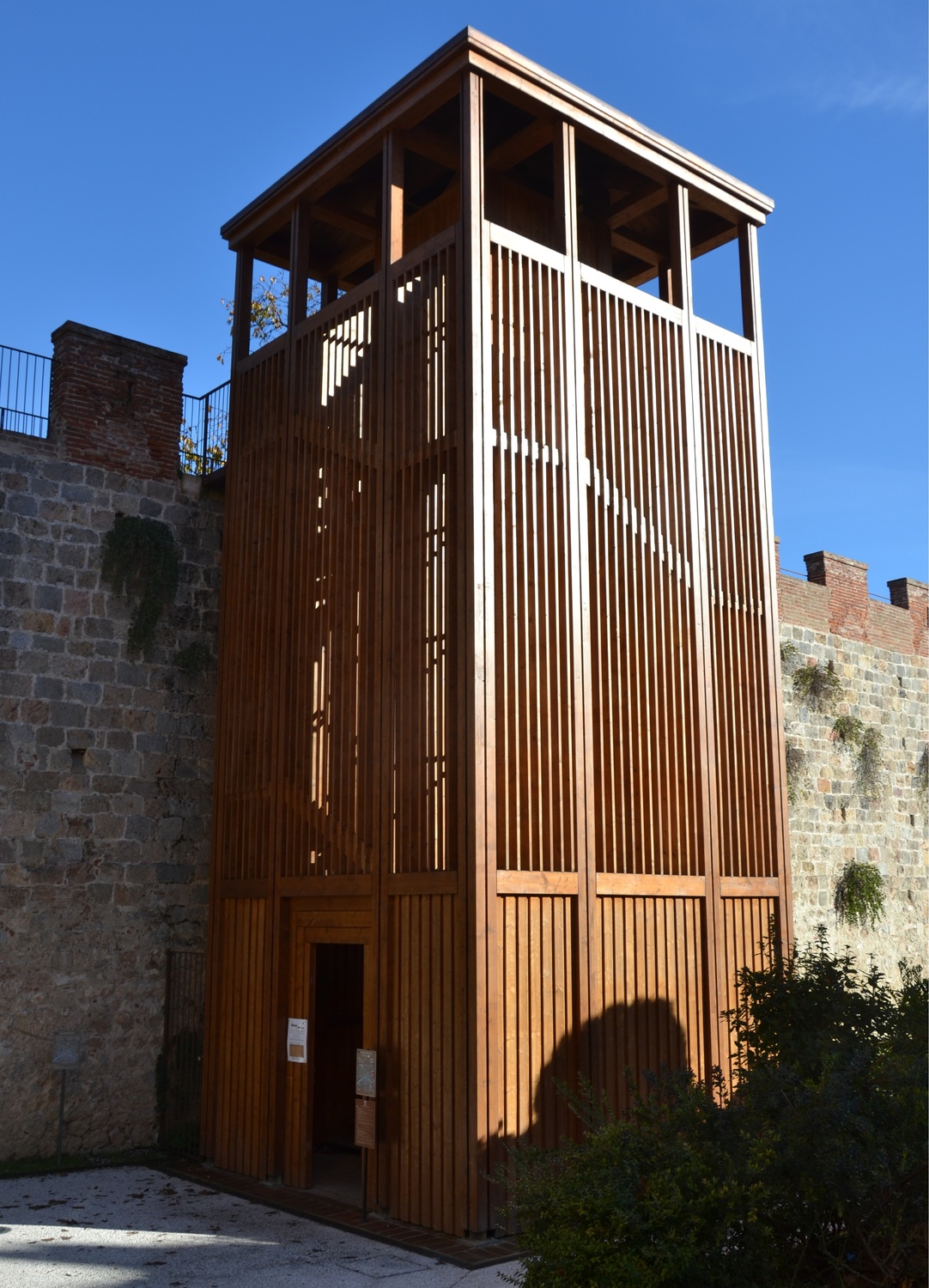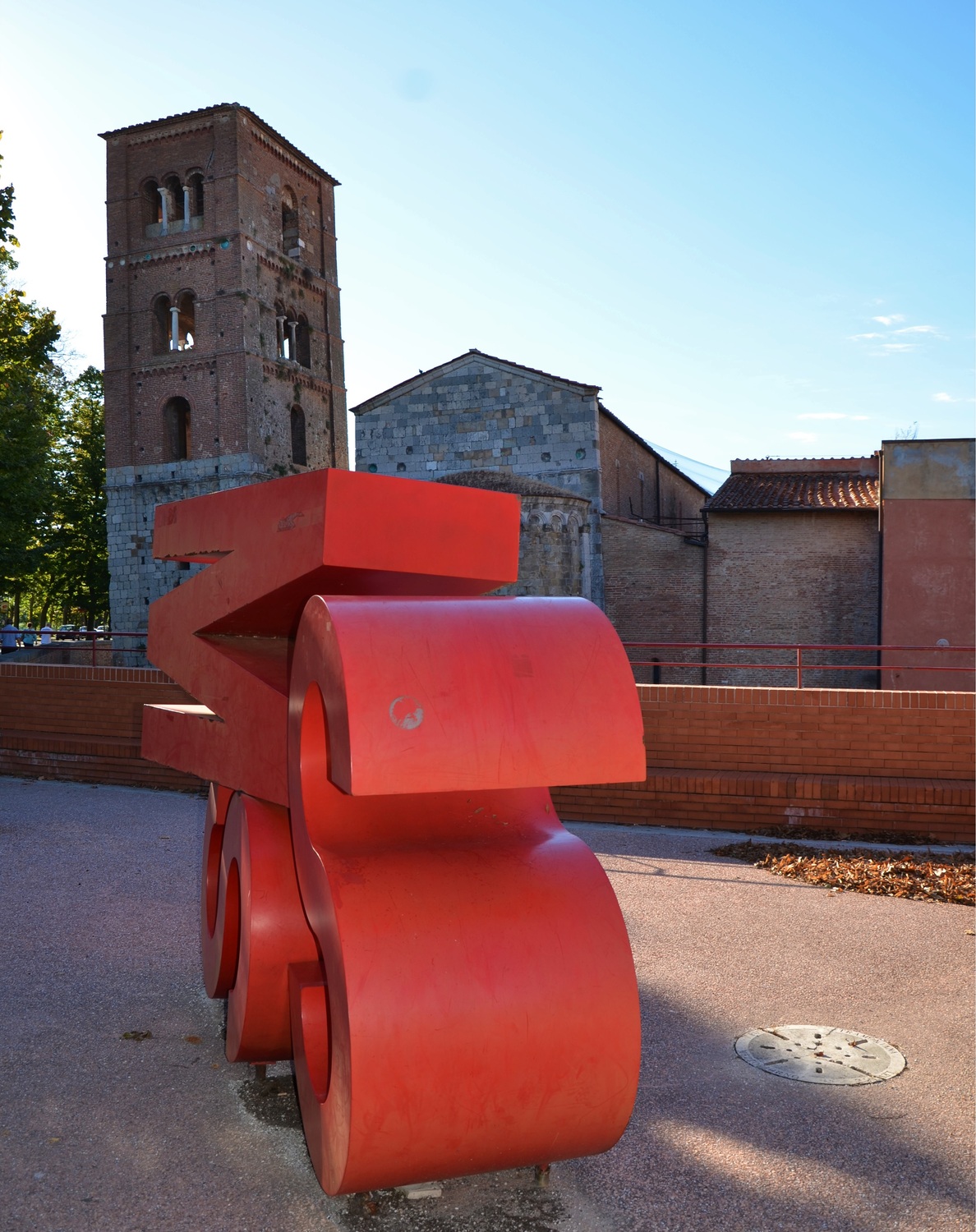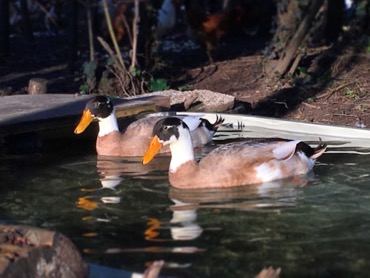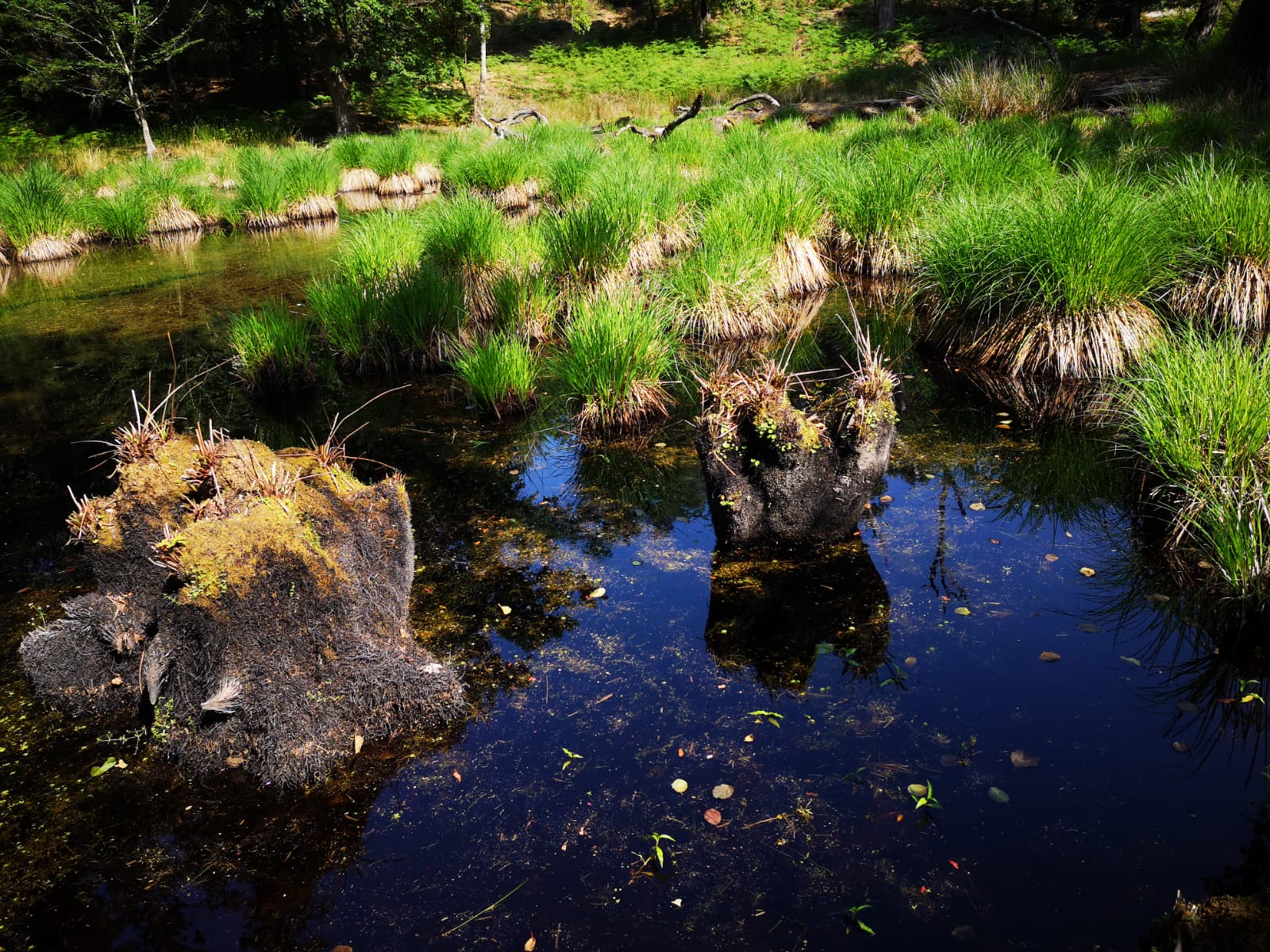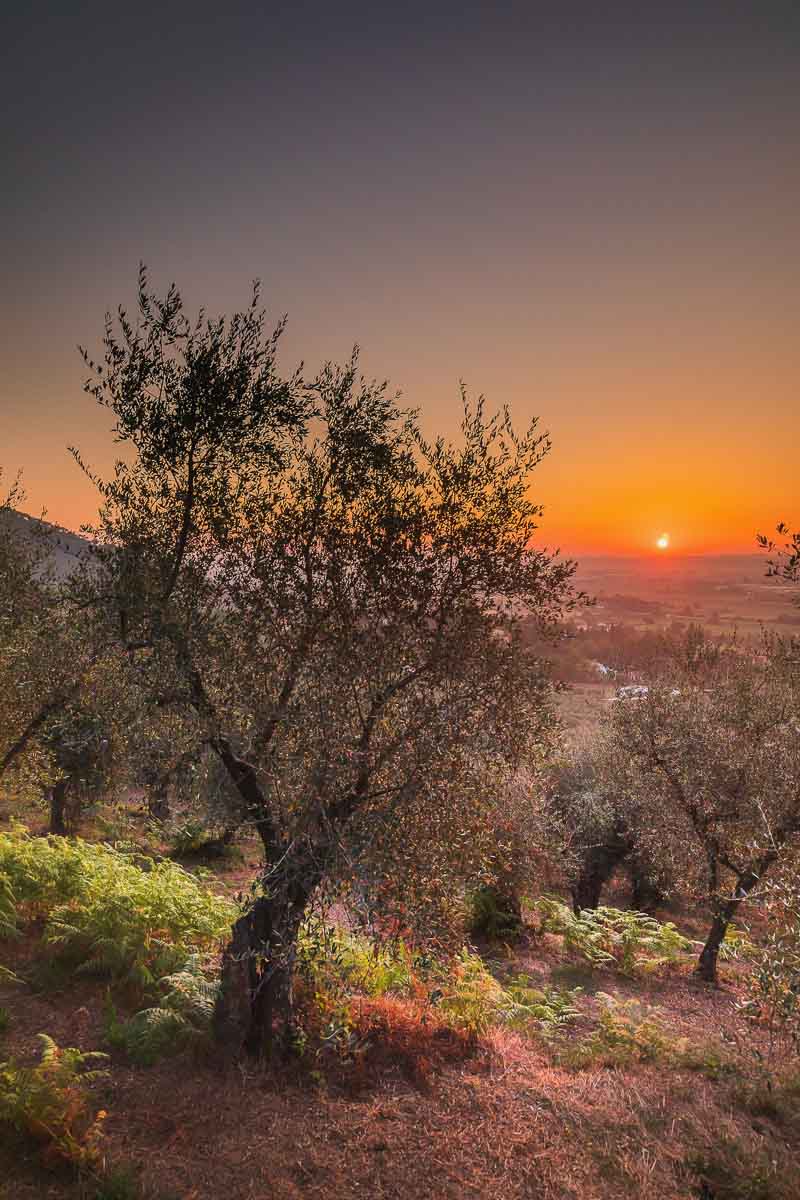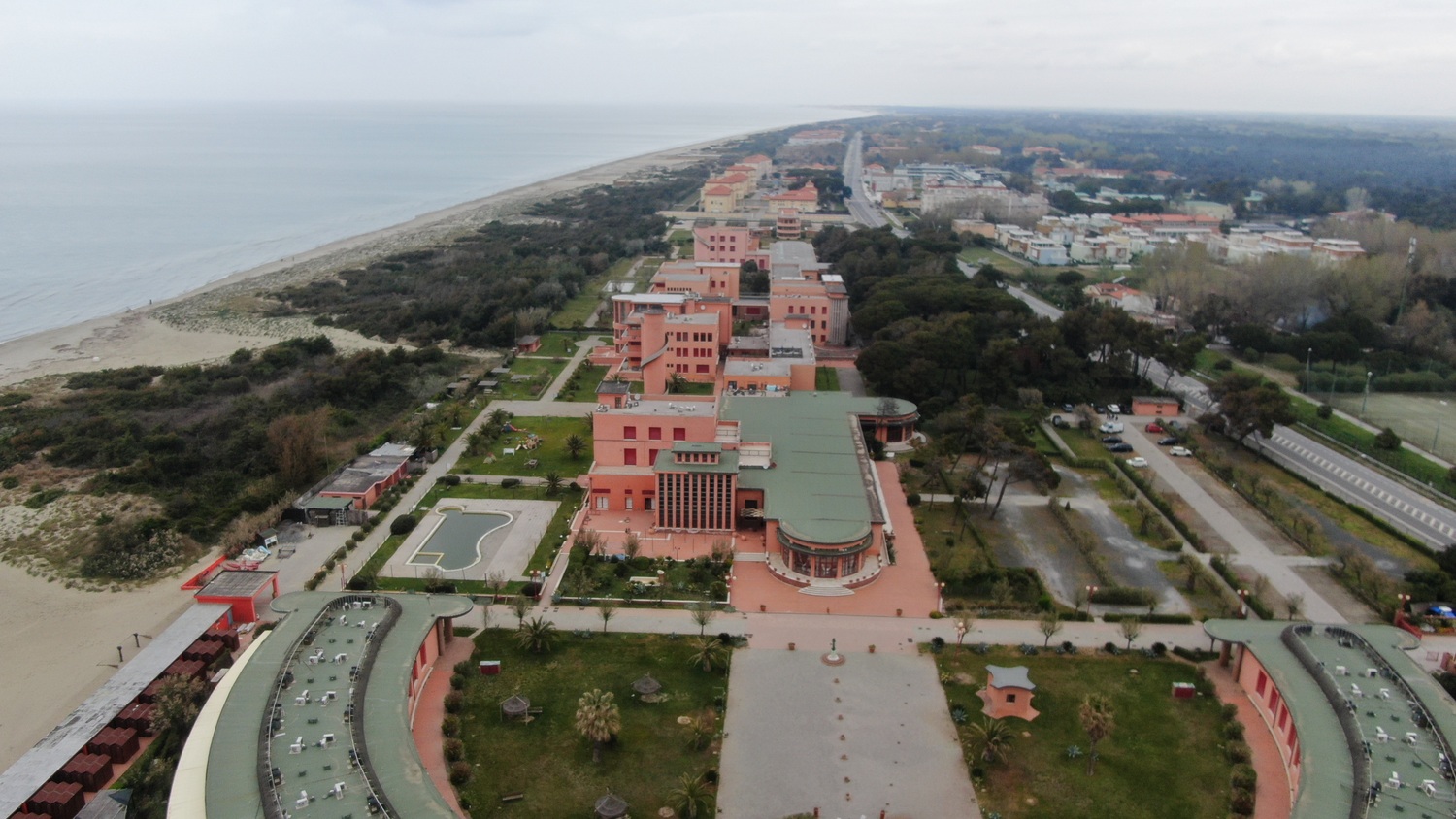- Miracles happen here.
- Miracoli is the name of the architect who began the work.
- The name was given by a poet.
- Reminds of the Field of Miracles of Pinocchio. (Answer 1 at the bottom of the page)
All these monuments were built between the 11th and 13th centuries, let's take a walk in the Middle Ages!, when Pisa was one of the four Maritime Republics, do you remember what the other three were? (Answer 2 at the bottom of the page)
The monuments we see were built as a symbol of the power of the Republic, but also as a symbol of the life cycle of Christians:
- Baptistery - Birth - Baptism is the first sacrament.
- Cathedral - Life - where the other sacraments are received.
- Hospital (now the Sinopie Museum) - Suffering.
- Campo Santo - Death.
- Leaning Tower (Campanile) - Resurrection.
- But what are the Sinopias? These are the preparatory drawings of frescoes. The name sinopia derives from the red earth, used for the drawings, which comes from Sinope, a city in Turkey. In particular, the Sinopie Museum of Pisa hosts the preparatory drawings of the frescoes found in the Campo Santo.
- Children! Get in the Baptistery! A surprise awaits you. What happens there? Do you want to know? Well, suddenly, at 9, 9.30, 10.00, 10.30... in short, every half hour, all the doors of the baptistery close and a person who works there goes to the centre and starts singing! He doesn't sing a song, but makes a sound to give you a demonstration of the ECHO. Thanks to the double dome of the baptistery the sound is repeated creating a wonderful music.
- When you are in the Cathedral try to imagine young Galileo Galilei who, when he was only 17 years old, while he was sitting on one of those benches, suddenly began to observe a lamp and… developed the isochronism theory!
- Have you entered the Campo Santo? Have you seen how many sarcophagi are there? Immediately you are wondering if they are burials, if the bodies are in there... they were once, but no, now the bodies are gone, and yet, of course you are in a cemetery. Here you have to look up to watch all the stories told in the frescoes!
- A curious fact: do you know why it is called Campo Santo? Returning from the First Crusade, the Pisans brought some of the land collected on the Golgotha hill, where Jesus was crucified, so it is really the Holy Land!
- And here is the Tower of Pisa! The bell tower! At the top there are 7 bells that once called the faithful. Today they are no working, what you hear is a recorded sound, this is because the vibrations could damage the tower, which is very delicate. The Pisans began to build the tower in 1173, but a few years from the start, when they reached the third ring, it immediately began to lean. That is why there is no certainty about the name of the first architect, since he made a big mistake ! …and he didn't want to be associated with that work! For a century the works were interrupted, then the tower was finally completed. The tower leans because it is located on an alluvial ground, with sand and clay, and for this same reason many other towers and buildings are leaning in Pisa today. Which ones? Some are: the bell tower of the church of San Nicola, the church and bell tower of San Michele degli Scalzi...
Cit. L’Ardea, roteò nel cielo di Cristo, sul prato dei Miracoli. Sorvolò le cinque navi concluse del Duomo, l’implicito serto del Campanile inclinato sotto il fremito dei suoi bronzi, la tiara del Battistero così lieve che pareva fosse per involarsi gonfia di echeggiamenti…Il Camposanto!…la grande urna quadrilunga ove la forza della città dorme fra un cipresso e un roseto, con i piedi congiunti, con le mani in croce sul petto…
Gabriele D’Annunzio, Forse che sì, forse che no, 1910.

